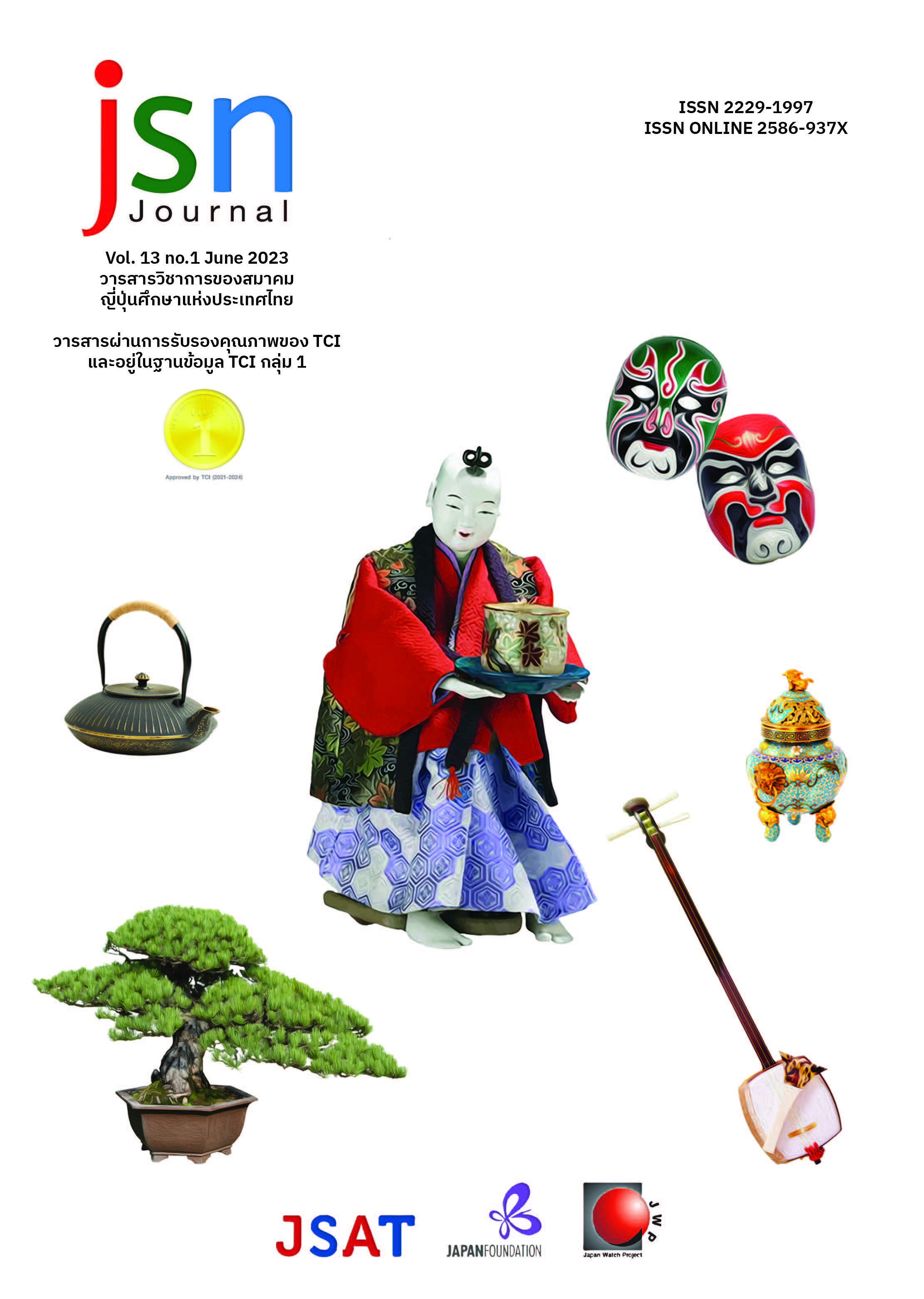The Characteristics and Beliefs Deduced from Japanese Narratives on the Life of the Buddha: A Case Study of Shaka no honji (The Story of Sakyamuni)
Main Article Content
Abstract
This article analyzes Japanese narratives on the life of the Buddha through a case study of Shaka no honji (The Story of Sakyamuni) by investigating Japanese beliefs that may be deduced from the narrative. After analyzing the plot of three versions of Shaka no honji (‘Denki-kei’, ‘Honji-kei’, and ‘Shakamonogatari’), the unique elements in the Japanese narratives of the Buddha’s life and beliefs implicit in Shaka no honji were analyzed. The results revealed that some similarities existed between the three versions, for example adding Jataka tales such as Sibi jataka, Prince Mahasattva jataka, and Young Ascetic of the Himalayas jataka; eliminating details unfamiliar to Japanese readers; or featuring sacred beings other than Indra as Buddha or Prince Siddhartha’s retinue. Adding the three jataka tales as a preface to Shaka no honji underlines the challenges in accumulating merit for enlightenment, while also showing how Shaka no honji reproduced a regular pattern of telling the Buddha’s life in medieval Japan. This featured abandonment of the body (‘shashin’) as it uniquely applied to the Boddhisattva in Mahayana Buddhism. Buddha or Prince Siddhartha’s retinue in the narratives was likely a sacred being disguised in diverse forms, such as a child. In the medieval period, children were seen as ambiguous entities between sacred and worldly spaces, containing spiritual and supernatural aspects. This theme is generally visible in medieval Japanese historical sources as well as in the Shaka no honji.
Article Details

This work is licensed under a Creative Commons Attribution-NonCommercial-NoDerivatives 4.0 International License.
ข้อความและข้อคิดเห็นต่างๆ ในบทความเป็นของผู้เขียนบทความนั้นๆ ไม่ใช่ความเห็นของกองบรรณาธิการหรือของวารสาร jsn Journal
References
น้ำใส ตันติสุข. (2563). ข้อสังเกตเรื่อง “สวรรค์” ในงานจิตรกรรมว่าด้วยภพภูมิและพุทธประวัติในประเทศญี่ปุ่นและประเทศไทย. ใน Proceedings of the 13th National Conference of Humanities and Social Sciences (HUSOC) Network 17-18 September 2020 “Innovation Powered by Humanities and Social Sciences” หนังสือประมวลบทความในการประชุมทางวิชาการ (Proceedings) ระดับชาติเครือข่ายความร่วมมือทางวิชาการ-วิจัยสายมนุษยศาสตร์และสังคมศาสตร์ ครั้งที่ 13 วันที่ 17-18 กันยายน พ.ศ. 2563, 155-182.
Glassman, Hank. (2007). "Shaka no Honji": Preaching, Intertextuality, and Popular Hagiography. Monumenta Nipponica, 62(3), 299-321.
君野隆久 (1993).「シビ王本生譚の分布と日本におけるその摂取」『比較文學研究』63, 113-128.
君野隆久 (2007). 「血の色-日本における薩埵王子本生譚」『比較文學研究』89, 31-49.
君野隆久 (2019). 『捨身の仏教 日本における菩薩本生譚』東京:KADOKAWA.
黒田日出男 (1986). 『境界の中世 象徴の中世』東京:東京大学出版会.
黒田日出男 (2017). 『増補 姿としぐさの中世史』東京:平凡社.
小松和彦 (2011). 「仏伝(釈迦の伝記物語)の日本的変遷 : 高知県いざなぎ流祭文」宇野隆夫(編),『アジア新時代の南アジアにおける日本像 : インド・SAARC諸国における日本研究の現状と必要性』(57-64). 京都: 国際日本文化研究センター.
小峯和明 (2012).「東アジアの仏伝文学・ブッダの物語と絵画を読む-日本の『釈迦の本地』と中国の『釈氏源流』を中心に-」『論叢国語教育学』8, 120-128.
津田徹英 (2003). 『日本の美術 第442号 中世の童子形』東京:至文堂.
仏書刊行会編纂 (1912).『大日本仏教全書 第148巻』東京:仏書刊行会.
仏書刊行会編纂 (1916).『大日本仏教全書 第107巻』東京:仏書刊行会.
松岡心平 (1993). 「稚児と天皇制」東二鎌田(編), 『民衆宗教史叢書 第二七巻 翁童信仰』(263-281). 東京:雄山閣出版.
松下藤子 (2015).「日蓮聖人の四条氏教化-日天子信仰を中心として-」『日蓮教学研究所紀要』43, 118-128.
本井牧子 (2016).「『釈迦の本地』の諸本」『京都大学國文學論叢』35, 47-69.
横山重編 (1962).『室町時代物語集 第四』東京:井上書房.


